In 2023, using eCommerce stores and social media for eCommerce isn’t something new. Given the state of the world in the COVID-19 era, eCommerce marketers and stores invested in digital marketing to boost their revenue and sales. And so far, it has been a successful journey.
According to Forbes, in 2021, “eCommerce sales were $870 billion in the US in 2021, a 14.2% increase over 2020 and a 50.5% increase over 2019. eCommerce represented 13.2% of all retail sales in 2021 in the US.”
The numbers below clearly indicate how consumer behavior has shifted from brick-and-mortar purchases to online purchases in the span of one – admittedly very eventful – year.
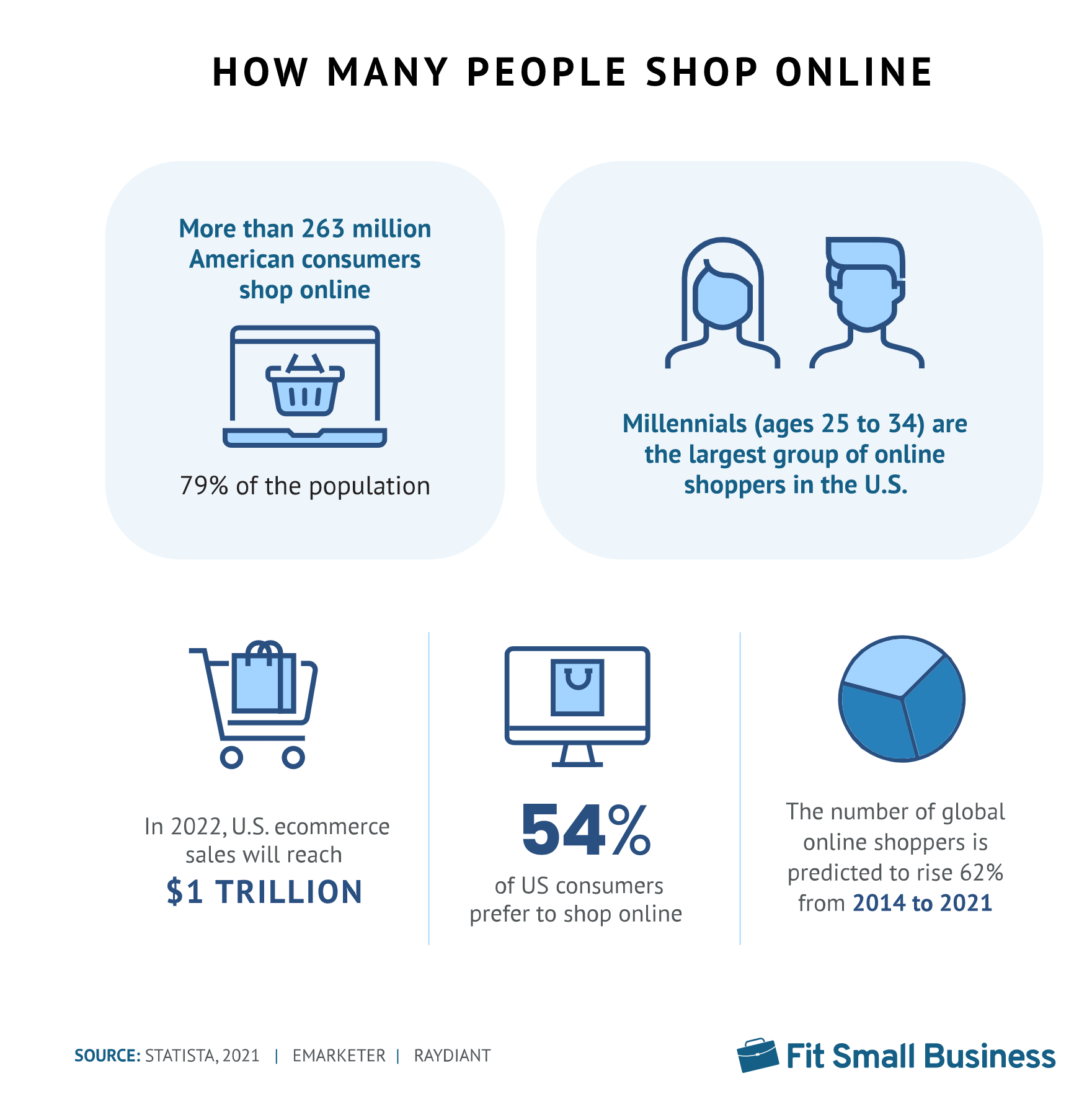
Source: fitsmallbusiness.com
Social media platforms have helped businesses adapt to coronavirus and reach most potential customers – especially Millennials, the main customer segment in 2020 and beyond. Keep in mind that this segment trusts brands that operate online more and more each day.
But how can you leverage social media for eCommerce to boost your revenue in 2023?
What Does Social Media for eCommerce Mean?
Using social media marketing to enhance your eCommerce strategy and boost your revenue is not as complicated as it sounds. Still, it’s no walk in the park either.
The reasons you need it are pretty simple. eCommerce marketing boosts brand awareness and traffic, first of all. It can also build a more trusting relationship between new leads or existing customers and your eCommerce store. Another benefit is that social media platforms have built-in functions that are great for targeting specific audiences, creating ads, and selling directly from your social media profiles.
It would be best if you didn’t forget that Millennials and Gen-Zers rely on online reviews quite heavily. Your online presence can be the make-or-break factor in the decision-making process.
Social media is an excellent place for your eCommerce marketing overall. It allows you to create a specific brand tone that users trust and love to interact with. Brands can interact and communicate with users directly through social media and gather data that leads have given up willingly.
This allows for better targeting and a better understanding of the users’ behavior on your brand’s social profiles, as well as your website.
Social Media for eCommerce: How to Get It Right in 2023
You can use numerous tactics to create a social media presence that will do your eCommerce marketing justice. Of course, no tactic is surefire without proper research, expert A/B testing, and gathering and analyzing data.
Not knowing your audience and your goals is one of the biggest mistakes marketers make regarding social media for eCommerce. So, let’s see how you can avoid this and more and ace your social media tactics for eCommerce.
Set Goals That Are SMART
Are your KPIs in order? Do you know what your objectives are and how to make them work for your revenue? If you answered no to any of the above, you’re in for a big surprise. The first step you need to take is to create goals that are SMART. As in:
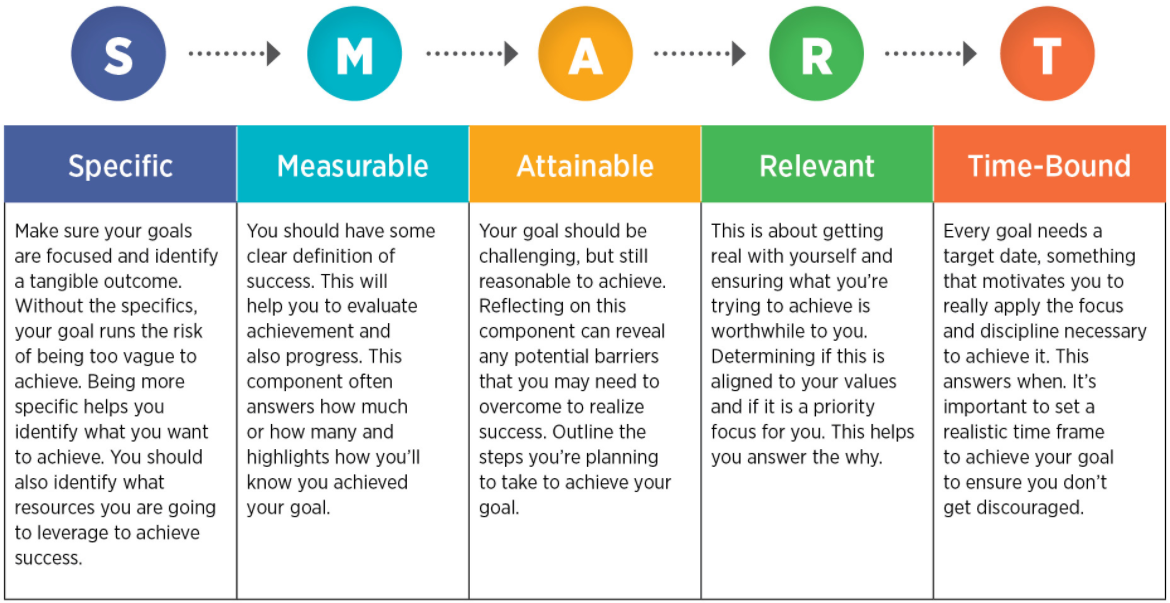
Source: cmcoutperform.com
Without the above, calculating the results of your efforts is next to impossible. Goals that are Specific, Measurable, Attainable, Relevant, and Time-Bound will help you create a meaningful social media strategy for your eCommerce store.
The number of followers or likes each post has isn’t an indicator of reaching your KPIs, so don’t get caught up in measuring those. Instead, ensure your SMART goals are on point.
- Being Specific will help you set a goal. It could be “Increase website traffic”, or “Score more new leads”.
- Setting Measurable goals will help you understand what success means to you. You can always measure your new leads, for example, but the engagement rate is a marketing metric that is more than a little hazy.
- An Attainable goal will help you understand what your social media strategy lacks and what its strengths are. Just make sure your goal is Attainable indeed.
- Relevant goals aim to determine what is aligned with your eCommerce marketing strategy overall. Wanting to boost website traffic, for example, when the main pain point in your eCommerce marketing strategy is more sales, is relevant and appropriate.
- Creating Time-bound goals is, essentially, creating deadlines for each milestone. Make sure your deadlines are realistic and can fit into your strategy. Don’t try to be a mega-influential brand overnight.
After creating a SMART goals plan to help you reach your eCommerce KPIs, see how it can interact with another key component.
Find Your Ideal Audience and their Preferred Platforms
Your target audience plays an integral role when it comes to pinpointing your goals. This is where creating customer – or buyer – personas comes into play. Buyer personas are real-life, fact-based depictions of your ideal consumer. Think of them as individuals with different educational backgrounds, ages, marital status, and so on.
Understanding your target audience when you start an eCommerce business allows your brand to use just the right message at the right time. This can be useful for all social media actions for eCommerce. If, for example, your social media campaigns target new parents, you’ll need to show them products a new parent will need. Parents of a toddler or a teenager will need different content.
Not understanding your buyer personas and not creating content that will resonate with those who follow you online won’t serve your end goal. Remember, social media for eCommerce is a helpful tactic only if used correctly.
Try to show why you’re better than the competitors in your niche, and answer the main question all users ask: Why should I buy from this brand?
The answer to that lies in your analytics. Use tools like Sotrender to obtain great insight into how your social media profiles and your customers interact. Create automatic reports that can be tailored to your desires and track competitors’ social media activity.
That way, social media for eCommerce and how your audience interacts with your competitors’ content can be trackable and traceable, helping you make informed decisions.
Of course, is your content even real if nobody is there to see it? This is why you need to be aware of your audience’s preferred social media platforms.
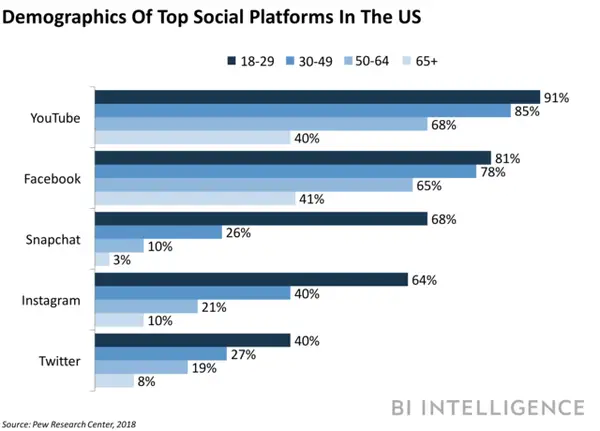
Source: businessinsider.com
Knowing your personas will give you a competitive edge when setting up your social media tactics for eCommerce and knowing the best platform for your business and your audience.
Just try not to get overwhelmed. Extensive social media calendars are fantastic tools when you’ve got a robust strategy in place, not when you’re just taking your first steps.
Start small with one or two platforms, and build your way up. You don’t need to set up a profile everywhere. If, for example, your audience is between the ages of 50-60, you don’t need to use Instagram as much, according to the statistics above.
Create Content Around Your Brand’s Tone
Brand awareness is nothing without a brand tone that is specific, memorable, and adjustable according to platform and audience. Here’s why:
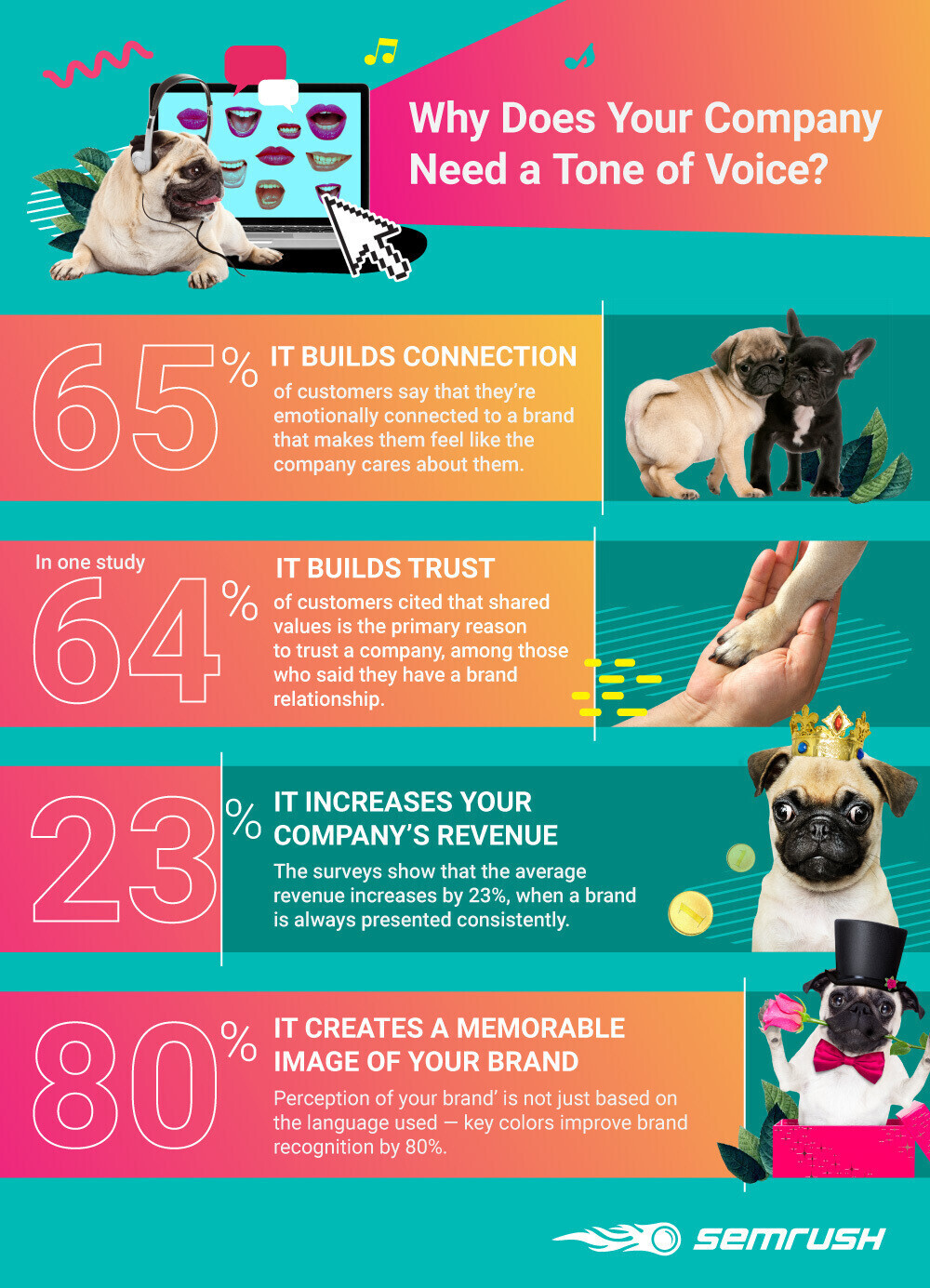
Source: semrush.com
A memorable brand tone will create brand awareness, and brand awareness is what users need to recognize you and eventually remember you and trust you.
Take Sephora, for example:
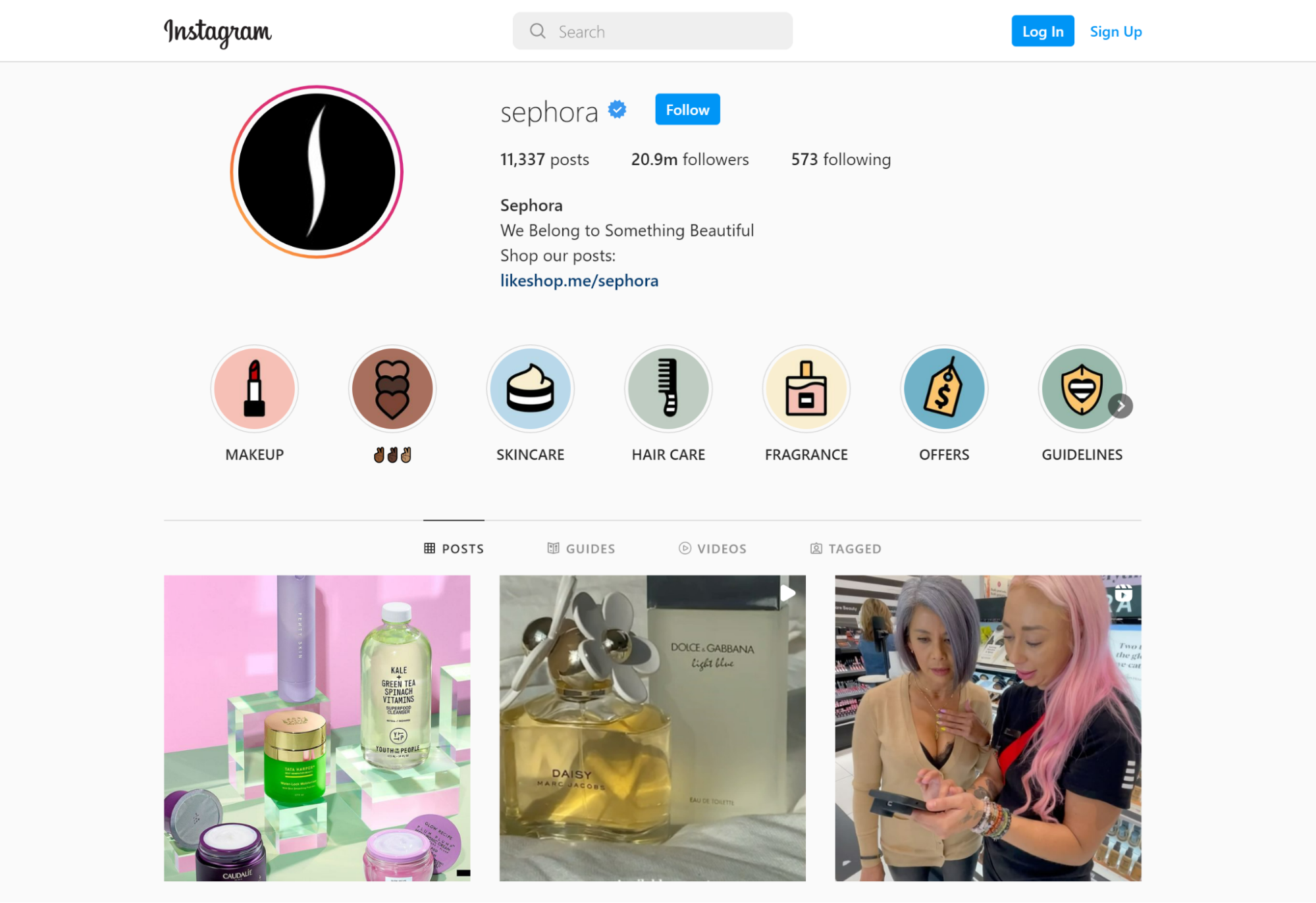
Source: instagram.com
Their social media pages reflect their brand, which is prevalent in all aspects of their marketing efforts. Their brick-and-mortar stores have the same look and feel as their app. Their email copy has the same feel as the copy users can see on their website. They offer a forward-thinking omnichannel experience. What is not to like?
Using social media for eCommerce in the same way can make users think, “Oh, it’s [XYZ]!”
And now, let’s talk pure content. It would be best if you were engaging and enticing in the blink of an eye. Create short videos for Instagram stories and short Facebook posts. Your audience is busy, and they won’t bother saving a 10-minute Facebook video for later.
Remember the main principle: Not every lead is there for you to sell. You need to create content that won’t be salesy from the get-go and understand that some leads need to be nurtured. At the same time, others are ready to be converted into customers – or repeaters.
Another fantastic way to use social media for eCommerce and attract a larger piece of your preferred demographic is to use your customers’ creativity. Utilize User-Generated Content (UGC) and get creative with it. Ask your existing customers to give you feedback on the brand experience your product has created for them and use this feedback in a testimonial video.
Do shout-outs, repost Instagram stories, and create branded hashtags for your eCommerce store’s posts that will make sense and happy customers will use. Encourage users to share this experience with their peers, and boost traffic by creating a one-time discount code for those who will urge their social circle to purchase from you.
Turning customers into brand ambassadors will strengthen their bond with your brand. And customers that are proud to use your products will share this with their social circle. This will give you a competitive edge through word-of-mouth marketing.
Understand and Enhance the Customer’s Journey
The stages from desire to purchase are plenty, and each one needs different content and tactics to be fruitful. And when using social media for eCommerce, you can’t afford to leave some stages of the funnel out of the equation.
A customer’s journey is the act of leads moving across different stages of the funnel and forming different wants and needs from your brand. So, there is no one tactic to use, from awareness to being an ambassador.
But let’s see what those stages are:
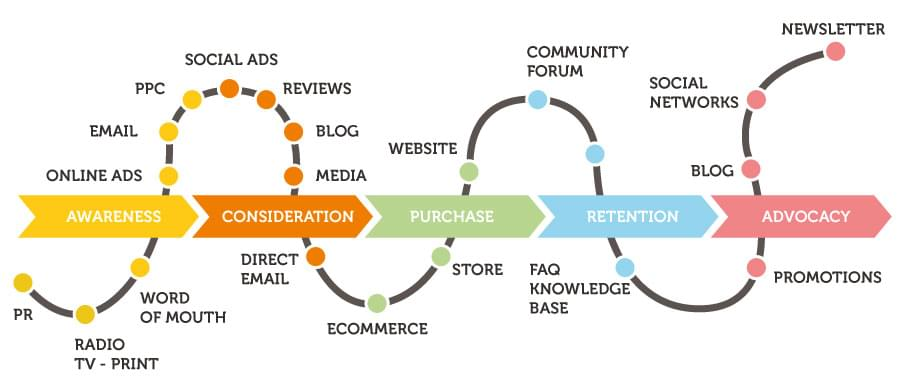
Source: saaslist.com
If you look closely, each stage in the funnel can have its own SMART goals to work with. For example, in the awareness stage, you will need some lead magnets to get your social media audience to visit your eCommerce store and proceed with a purchase. These can be free shipping, a small discount, or a gift for the lead’s first order.
If you’re an e-commerce brand, in the purchase stage, you can get creative by posting a QR code for people to go directly to the product. These codes can be quickly generated using any of the best QR code generators.
On the other hand, a repeater in the advocacy stage is the perfect person to ask for a review and target through replenishment email campaigns and targeted ads for perishable goods – if that’s what your eCommerce store offers, of course.
To show just the right thing at the right time, you’ll need marketing automation tools that will be able to create small segments of your customers. That way, you’ll manage to come up with content ideas that your social media followers will resonate with. Almost on a one-on-one basis, no less.
Post the Right Thing and Collaborate With the Right People
So, you have a better understanding of how social media for eCommerce works, right? This is the time to make sure to use scheduling software and create a calendar that will boost your efforts.
It would be best if you kept a clear, consistent posting schedule. Here’s what Entrepreneur’s research has shown:
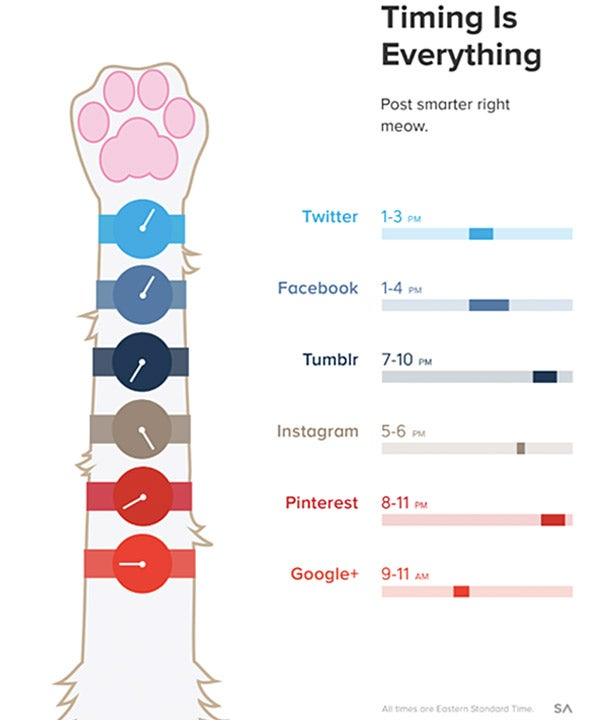
Source: entrepreneur.com
Of course, these times are not set in stone. You will need to test and test again and find out what works better with your audience before creating a regular schedule. The objective here is to have users look forward to your message instead of sending it whenever and expecting them to see it.
Another real post booster is collaborations. You can collaborate with brands with products that work complementary to yours. If, for example, your eCommerce store offers beachwear, collaborating with a sunscreen brand would make a lot of sense.
Collaborating with Influencers in your niche or other brands and using your social media in a way that seems natural and fun can work wonders when it comes to customer loyalty.
The Takeaway
As we reach the end, let me summarize the five key tactics brands should utilize when taking advantage of the power of social media for eCommerce:
- SMART goals make all the difference
- Finding the right users on the right platform will boost your conversion down the line
- Your brand’s tone and content are paramount when creating memorable experiences
- The same goes for the customers’ journey
- Create smart posts and collaborations for the best effect.
Of course, you should never forget that more than most tactics are just the blueprint and can – and should – be adjusted according to your audience and individual goals.







